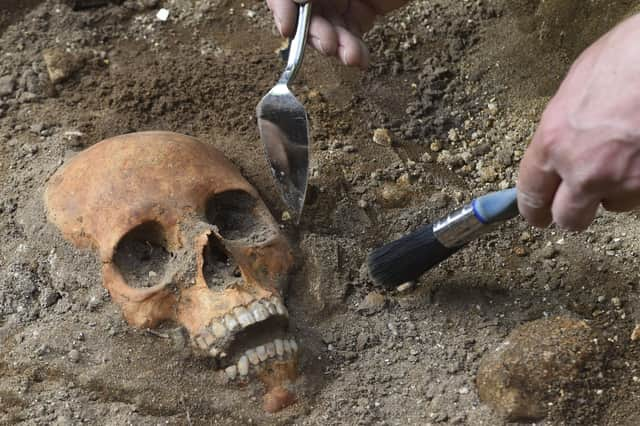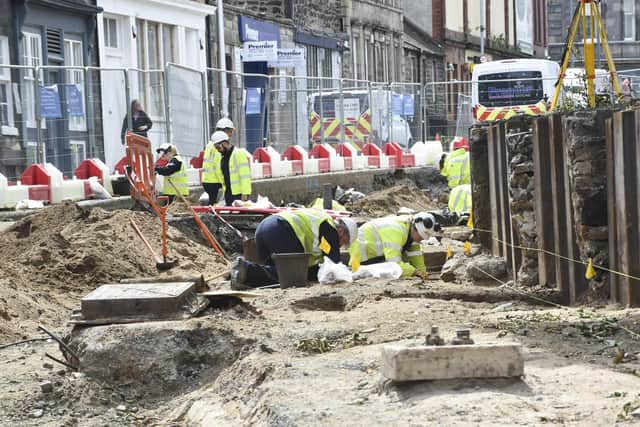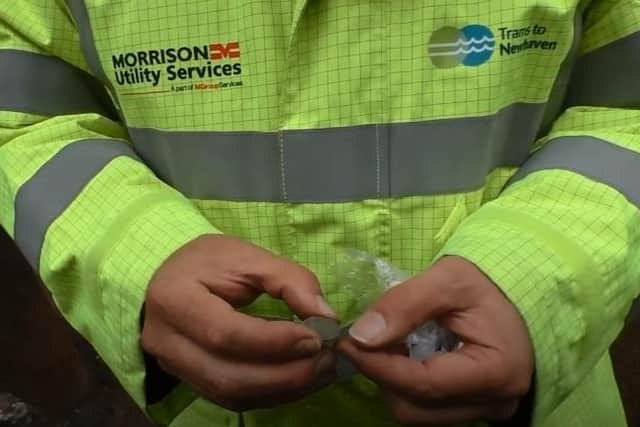South Leith Parish Church archaeological dig: The most fascinating finds unearthed so far


Since the start of the summer, Leithers have been treated to a complimentary peek at the port’s medieval past, as archaeologists openly unearth fascinating antique finds from beneath Constitution Street.
With the Trams to Newhaven project now in the initial phase of construction, close to 100 human remains dating from as far back as the 14th century have been exhumed within the historic boundary of South Leith Parish Church on the future tram route.
Advertisement
Hide AdAdvertisement
Hide AdPrior to the construction of Constitution Street in 1790, the graveyard once extended a few hundred yards east of its modern boundary and hundreds of men, women and children of all ages were laid to rest below what is now a road.
Similar to a previous dig in 2008 that uncovered the remains of nearly 400 individuals, a fair proportion of the skulls found in the past few weeks are in such a well-preserved state that experts plan to take them away for forensic analysis and attempt digital facial reconstructions.
Hundreds more burial plots are thought to have been lost during the Victorian era when a sewer system was built.
But it’s not just the dozens of burial plots that are wearing down archaeologists’ trowels and brushes. A large number of ancient artefacts have emerged from the sacred ground too.
Advertisement
Hide AdAdvertisement
Hide AdRubble remains of the church’s original boundary wall, dating from 1483, can be seen along with evidence of a gravel pathway that formerly ran between the Kirkgate and Leith Links.


Whale bones, providing a direct link with Leith’s whaling past, have emerged, as well as a very rare cannonball that was likely fired during the 1559-60 Siege of Leith. A second cannonball has also been discovered and is of a type common during the Cromwell occupation in the 1600s when Constitution Street and Leith were refortified.
Situated by one of the plots is a grave marker, the survival of which is considered exceptionally rare. Nearby is an unusual burial, with the head of the individual set to the east - a right usually associated with the clergy.
Much of the dig site itself is sandy-coloured, a remnant of Leith’s once sprawling sand dunes that furnished land far beyond the modern-day docks after the last ice age.
Advertisement
Hide AdAdvertisement
Hide AdCity Archaeologist John Lawson has been presenting a regular vlog on YouTube, detailing finds over the past eight weeks.


One find that has attracted a lot of attention in the past week is an early 17th century coin of Dutch origin.
Speaking during the latest vlog, Mr Lawson said: “We’ve got two finds showing international connections - both from Holland and dating from the 17th century. One is a shard from a Dutch redware, possibly a skillet or cooking vessel. A common import in Leith and Scotland at that time.
“We have very few coins coming up in local excavations - people are very careful with coins, but what we have here is quite an interesting coin from northern Holland and dates to 1628. It adds that trading connection between Edinburgh and what is now the Netherlands.”
A message from the Editor:
Advertisement
Hide AdAdvertisement
Hide AdThank you for reading this story on our website. While I have your attention, I also have an important request to make of you.
The dramatic events of 2020 are having a major impact on many of our advertisers - and consequently the revenue we receive. We are now more reliant than ever on you taking out a digital subscription to support our journalism.
Subscribe to the Evening News and enjoy unlimited access to Edinburgh news and information online and on our app. Visit https://www.edinburghnews.scotsman.com/subscriptions now to sign up.
By supporting us, we are able to support you in providing trusted, fact-checked content for this website.
Joy Yates
Editorial Director
Comment Guidelines
National World encourages reader discussion on our stories. User feedback, insights and back-and-forth exchanges add a rich layer of context to reporting. Please review our Community Guidelines before commenting.